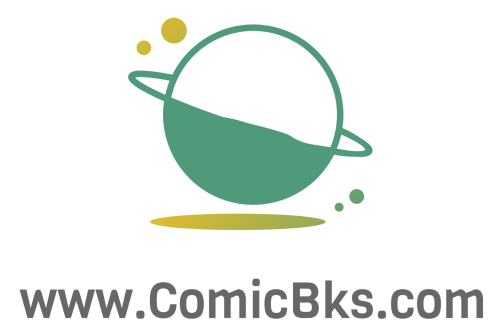Comic books, a longstanding and beloved form of storytelling, offer readers an escape into worlds of wonder and heroism. These narratives have been capturing the imaginations of people of all ages for decades. Central to this captivating universe is Wonder Woman, a character who embodies strength, grace, and feminist ideals. This expanded blog post will dive deeper into the rich history of Wonder Woman, shedding light on her timeless appeal, and examining her significant impact on the comic book industry and society at large.
I. The Origins of Wonder Woman
A. Creation and Debut
Wonder Woman, conceived by psychologist William Moulton Marston and artist Harry G. Peter, made her groundbreaking debut in All-Star Comics #8 in December 1941. Her creation during World War II was intended to symbolize female empowerment and serve as a beacon of feminism.
B. Inspirations and Influences
- Greek Mythology: Drawing heavily from Greek mythology, Wonder Woman was portrayed as an Amazonian princess named Diana, connecting ancient tales of female warriors to a modern narrative.
- Suffrage Movement: Marston’s inspiration was partly rooted in the suffrage movement. He aimed to create a character who would champion gender equality in a male-dominated world.
- Olive Byrne Influence: Marston’s personal life, especially his relationship with Olive Byrne and his wife, Elizabeth Holloway Marston, influenced the creation of Wonder Woman’s character, intertwining elements of their personalities and ideals into her persona.
II. The Multifaceted Strength of Wonder Woman
A. Physical Strength
- Superhuman Abilities: Wonder Woman’s superhuman strength allows her to triumph over adversaries, often being portrayed as equal to superheroes like Superman and Batman.
- Emotional Resilience: Beyond physical might, she exhibits emotional resilience, portraying a character who is not just strong in battle but also in spirit.
B. Mental Fortitude
- Intellectual Prowess: Her intelligence and strategic thinking make her an invaluable team member in any scenario.
- Role Model: As a role model, she inspires readers to embrace their fears, tackle challenges, and trust in their strengths.
III. The Grace of Wonder Woman
A. Diplomacy and Compassion
- Empathy in Action: Known for her empathy, Wonder Woman often seeks peaceful solutions, highlighting the importance of understanding and compassion.
- Unity Ambassador: She bridges different worlds, advocating for unity and kindness even in challenging times.
B. Beauty and Wisdom
- Inner and Outer Beauty: Wonder Woman symbolizes beauty that transcends physical appearance, emphasizing wisdom and character.
- Inspiration for Growth: Her grace and intelligence inspire personal growth and the celebration of unique individual qualities.
IV. Wonder Woman as a Feminist Icon
A. Challenging Gender Norms
- Breaking Stereotypes: Wonder Woman dismantles traditional gender stereotypes, offering an alternative to the common ‘damsel in distress’ narrative.
- Feminist Themes: Her storylines incorporate feminist themes, prompting readers to reflect on societal norms and gender equality.
B. Representation and Empowerment
- Role Model for Women and Girls: As a female superhero, Wonder Woman provides much-needed representation in a predominantly male comic book world.
- Influence Beyond Comics: Her impact reaches beyond comics, inspiring real-world advocacy for gender equality and women’s rights.
V. Wonder Woman’s Lasting Popularity
A. Cultural Impact
- Decades of Popularity: Wonder Woman has been a beloved figure for over seventy years, appealing to multiple generations.
- Multimedia Presence: Her story has been adapted into TV shows, animated films, and major motion pictures, cementing her status as a global symbol of strength, justice, and feminism.
B. The Collectible World of Wonder Woman Comics
- Collectors’ Treasure: Wonder Woman comics have become valuable collectibles, with fans seeking first editions, key storylines, and iconic covers.
- Deep Dive into Wonder Woman’s World: Collecting these comics offers fans a way to engage deeply with her story and appreciate the evolution of her character.
FAQ: Frequently Asked Questions
- What is Wonder Woman’s real name?
- Diana Prince is the alter ego of Wonder Woman.
- What are some of Wonder Woman’s iconic storylines?
- Notable storylines include “The Legend of Wonder Woman,” “The Hiketeia,” and “Gods and Mortals.”
- Who are some key villains Wonder Woman has faced?
- She has battled foes like Cheetah, Ares, Circe, and Doctor Psycho, each presenting unique challenges and adding depth to her story.
This expanded exploration into the world of Wonder Woman reveals not only her role as a cultural icon but also the depth of her character and the broad impact she has had on her audience and the wider world. Her story continues to inspire and captivate, proving that she is much more than just a character in a comic book – she is a symbol of strength, resilience, and empowerment.
The Legacy of Wonder Woman: An Expanded Exploration
Comic books, an integral part of modern literature and storytelling, offer a unique blend of art and narrative that has captivated audiences for generations. Among the pantheon of comic book characters, Wonder Woman stands as a beacon of strength, grace, and feminism. This blog post aims to delve deeper into the origins, characteristics, cultural significance, and enduring appeal of Wonder Woman, exploring her influence not only within the comic book industry but also her impact on societal perspectives and pop culture.
I. Unveiling the Origins of Wonder Woman
A. The Inception and Arrival
Wonder Woman, a brainchild of psychologist William Moulton Marston and artist Harry G. Peter, emerged in All-Star Comics #8 in December 1941, amidst the turmoil of World War II. Her creation was not only a response to the conflict-ridden era but also a deliberate attempt to craft a symbol of empowerment for women in a predominantly male superhero landscape.
B. The Tapestry of Inspirations
- Mythological Roots: Tapping into the rich lore of Greek mythology, Wonder Woman’s character was shaped as Diana, a warrior princess from the mystical Amazonian island, weaving ancient narratives of powerful female figures into her very essence.
- Suffragette Influence: Marston’s inspiration was also derived from the women’s suffrage movement, a testament to his vision of a character who would embody the ideals of gender equality and challenge societal norms.
- Personal Influences: Intriguingly, Marston’s personal life, particularly his relationship with Olive Byrne and his wife Elizabeth, influenced the creation of Wonder Woman, blending their traits and philosophies into her character.
II. The Multidimensional Strength of Wonder Woman
A. Beyond Physical Prowess
- A Symbol of Power: Wonder Woman’s superhuman strength places her alongside the likes of Superman and Batman, challenging the perception of female heroes in the comic book genre.
- Resilience and Spirit: Her strength extends beyond the physical, embodying emotional and spiritual resilience, making her a complex and relatable character.
B. Intellectual Might
- Strategic Genius: Beyond her physical capabilities, Wonder Woman’s strategic acumen and wisdom make her a formidable force, both in battle and in her pursuit of peace and justice.
- Empowering Readers: Her character serves as an inspiration, encouraging readers to embrace inner strength, confront challenges, and value intelligence and wisdom.
III. The Elegance and Grace of Wonder Woman
A. Advocate of Peace and Understanding
- Empathetic Warrior: Renowned for her empathy, Wonder Woman often champions peace over conflict, emphasizing understanding and diplomacy.
- Harbinger of Unity: Her role as an ambassador bridges various realms, promoting a message of unity and compassion, even in the face of adversity.
B. The Beauty of Wisdom
- Redefining Beauty: Wonder Woman redefines beauty, integrating physical appearance with wisdom, intellect, and moral fortitude.
- Inspiring Personal Growth: Her character encourages readers to pursue personal growth, embracing and celebrating their unique attributes and strengths.
IV. Wonder Woman: A Feminist Icon and Cultural Trailblazer
A. Subverting Gender Norms
- A New Narrative: By presenting a powerful and independent female protagonist, Wonder Woman shatters traditional gender stereotypes prevalent in comic narratives.
- Feminist Undertones: Her storylines, imbued with feminist themes, challenge readers to reconsider societal norms and advocate for gender equality.
B. Symbol of Representation and Empowerment
- Icon for Women and Girls: Wonder Woman’s presence provides a much-needed representation in the male-dominated comic book industry, serving as a role model for female empowerment.
- Beyond the Comic Pages: Her influence transcends the comic book realm, inspiring real-life movements for gender equality and women’s rights.
V. The Timeless Appeal of Wonder Woman
A. A Cultural Phenomenon
- Enduring Popularity: Wonder Woman’s appeal has spanned decades, resonating with audiences across different eras and cultures.
- A Versatile Icon: Her adaptations in various media forms, including television, animation, and blockbuster films, have solidified her status as a global symbol of justice, strength, and feminism.
B. The World of Wonder Woman Collectibles
- A Collector’s Delight: The comic books of Wonder Woman have become prized collectibles, with enthusiasts seeking out first editions, pivotal storylines, and iconic artwork.
- Exploring Her Universe: Collecting these comics offers an immersive experience into Wonder Woman’s world, providing a deeper understanding of her evolution and the rich storytelling involved.
FAQs: Exploring Wonder Woman’s Mystique
- Who is Diana Prince?
- Diana Prince is the civilian identity of Wonder Woman, a guise that allows her to blend into human society.
- Memorable Storylines of Wonder Woman?
- Iconic storylines like “The Legend of Wonder Woman,” “The Hiketeia,” and “Gods and Mortals” have captivated readers with their depth and narrative complexity.
- Noteworthy Adversaries?
- Wonder Woman has faced a roster of formidable villains including Cheetah, Ares, Circe, and Doctor Psycho, each adding layers to her story and challenging her in unique ways.
In this expanded exploration, we see Wonder Woman not just as a character in a story but as a cultural icon, a symbol of empowerment, and a figure who has profoundly influenced both the comic book industry and societal views on strength and femininity. Her legacy continues to inspire and engage, demonstrating that she is far more than a fictional superhero – she is a symbol of hope, resilience, and empowerment.

